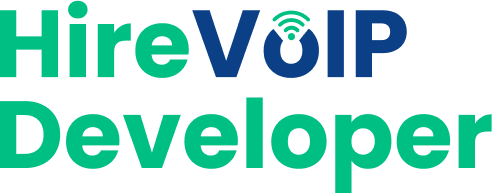📝 Blog Summary
Discover how advanced VoIP development, SBCs, and smart call center technologies can transform your business communication. This blog breaks down technical insights, practical tips, and use cases that matter to VoIP-driven enterprises.
If you’ve been exploring telephony solutions or looking into how to configure VoIP server setups, chances are you’ve come across FreeSWITCH. It’s a powerful open-source platform known for its flexibility and scalability in handling real-time communications.
But what if your goal is simple – just to make an outbound call from FreeSWITCH?
That’s exactly what we’re diving into today.
🗝️ Key Highlights
- FreeSWITCH enables seamless outbound calling through SIP trunk integration and smart dial plans.
- Proper VoIP server configuration ensures successful call routing and reliable connectivity.
- Monitoring and debugging tools help maintain call quality and system stability.
Let’s walk through how you could use the FreeSWITCH server to make an outbound call.
Don’t worry, we’re keeping it light on tech jargon and completely code-free. So even if you’re not a seasoned developer, you can still grasp how it all works.
What is FreeSWITCH?
Imagine having your own mini telecom system that you can completely control.
FreeSWITCH offers that. It’s an open-source telephony platform that can handle everything from handling voice calls and video conferences to sending chat messages.
Whether you’re running a call center or just need a reliable VoIP solution with FreeSWITCH, this is your take!
What sets FreeSWITCH apart is its modular design. This means you can plug in only the features you need, making it great for customized setups, especially if you’re thinking about using FreeSWITCH to enhance VoIP for outbound calls.
💡 Did You Know?
FreeSWITCH was born to go beyond Asterisk.
FreeSWITCH was originally developed by former Asterisk developers who wanted a more scalable, flexible alternative. It was designed from scratch – not as a fork – so it could support more complex call flows and modern VoIP features.
Prerequisites for Making Outbound Calls
Before we jump into the meat of FreeSWITCH outbound call routing, let’s make sure we’ve got our bases covered:
1. FreeSWITCH is Installed and Running
First things first – you need FreeSWITCH up and running. Whether it’s on a cloud server (like AWS, DigitalOcean, etc.) or on your own local machine, make sure the installation is complete and the service is active. If you’re still setting it up, FreeSWITCH’s official documentation offers great step-by-step installation guides for various platforms.
2. Command-Line Interface (CLI) Access
You’ll need to be comfortable accessing FreeSWITCH’s CLI. This is your primary control panel for interacting with the system in real-time. From checking logs to reloading configurations and testing dial plans, the CLI is where most of the action happens during development and troubleshooting.
3. SIP Trunk or VoIP Provider Account
To make outbound calls to the PSTN (Public Switched Telephone Network), you need an SIP trunk or an account with a VoIP provider. Think of this as your virtual telephone line that connects your FreeSWITCH server to the outside world. Many providers, like Twilio and Flowroute, offer flexible SIP trunking services for telecommunications.
4. Basic VoIP and Dialplan Knowledge
Don’t worry! You don’t need to be a telephony expert! But having a basic idea of what VoIP is, how SIP works, and how dialplans function within FreeSWITCH will make this journey smoother. If terms like “context,” “extension,” or “gateway” sound unfamiliar, we’ll break them down as we go.
📞 Want to streamline outbound calling using FreeSWITCH?
Let me break things down step-by-step.
Understanding the Call Flow
Okay, so how does a FreeSWITCH outbound call actually happen?
It starts with a dial plan. Think of it as your call routing map. When you dial a number, FreeSWITCH looks at this map to decide what to do with the call. Should it go to voicemail? Should it be routed through your SIP trunk?
Then, there’s the SIP profile, which defines how your FreeSWITCH server communicates with other systems.
Last but not least, we have the gateway or SIP trunk. This is your bridge to the external world, like a VoIP provider. The call leaves your FreeSWITCH server and is carried over this bridge to the destination number.
Setting Up the SIP Trunk
A SIP trunk is like your virtual phone line. It connects your FreeSWITCH system to the public telephone network.
To get started, you’ll need a SIP trunk from a VoIP provider. This includes,
- Server address
- Username and password
- Preferred codecs (these handle how audio is transmitted)
This is a vital part of your VoIP server configuration and one you can’t skip when planning FreeSWITCH outbound call setup.
Creating the Outbound Dialplan
Here’s where the magic happens. A dial plan is essentially a set of instructions. It tells FreeSWITCH what to do when someone dials a number.
For example, if a user dials a number starting with “+1”, the dialplan might say: “Send this through our SIP trunk.” This is the heart of FreeSWITCH outbound call routing, and it’s where you define conditions (like number patterns) and actions (like where to send the call).
Think of it like setting up a GPS route: the dialplan is your navigation system.
Registering with a VoIP Provider
This step ensures your VoIP server’s outbound call is actually authorized to go through the provider. Just having credentials isn’t enough; your server must register with the VoIP provider to be recognized.
This process tells the provider, “Hey, I’m here and ready to make calls!”
Keep an eye out for registration errors. If your FreeSWITCH server isn’t properly registered, your outbound calls won’t go anywhere. It’s like trying to board a plane without a ticket.
Initiating the Outbound Call
Once everything is set, it’s go time.
When you initiate a call from FreeSWITCH, here’s what happens:
- FreeSWITCH reads the dialplan to see where the number should go.
- It checks the SIP profile and sees which gateway (or SIP trunk) is available.
- If all is well, it dials out through the SIP trunk to reach the destination.
This seamless process is what makes FreeSWITCH for outbound calls so efficient.
💡 Did You Know?
Supports thousands of concurrent calls
With the right hardware, FreeSWITCH can handle thousands of concurrent calls. That scalability is one of the reasons it’s used in large call centers and carrier-grade systems.
Monitoring and Debugging
Even the smoothest setups can hiccup. That’s where monitoring tools and logs come in. Using FreeSWITCH’s CLI, you can see what’s happening in real-time. Whether it’s a failed call attempt or a misconfigured dial plan, the logs will tell you.
If you’re testing how you could use the FreeSWITCH server to make an outbound call and nothing’s happening, this is your first stop for troubleshooting.
Security Considerations
Let’s talk safety. An open VoIP server is like an unlocked front door.
To secure your FreeSWITCH call setup:
- Use strong SIP passwords.
- Restrict IP access using ACLs (Access Control Lists).
- Implement a firewall to block unwanted traffic.
These steps help prevent unauthorized VoIP server outbound call attempts, which could rack up hefty charges.
✅ Ready to make crystal-clear outbound calls with FreeSWITCH?
Wrapping Up
From understanding dial plans to ensuring your server is securely registered, making a FreeSWITCH outbound call doesn’t have to be rocket science. Once you get the hang of FreeSWITCH outbound call setup, you’ll find it a robust and reliable way to manage all kinds of telephony needs.
Whether you’re just curious or planning to deploy your own solution, hopefully, now you feel a bit more confident in how to make a call from FreeSWITCH. If you’re already playing around with settings, keep an eye on your logs and test often.
Hire VoIP Developer helps businesses seamlessly set up FreeSWITCH servers for outbound calls by configuring SIP trunks, dial plans, and VoIP provider integration. Their expert team ensures smooth FreeSWITCH outbound call routing with secure, scalable, and customized solutions tailored to your needs.
You’ll be a FreeSWITCH pro before you know it!


